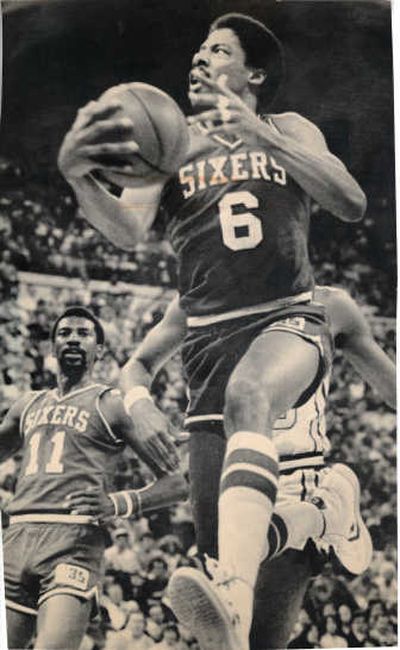Converse remains fit at 100

ORLANDO, Fla. – They were the wings for the soaring dunks of Dr. J and were on the feet of Bill Russell and Larry Bird as they left tread marks across Boston Garden’s parquet floor.
They gave extra jolt to Magic Johnson and “Showtime.” They were there for tennis stars Chris Evert’s and Jimmy Connors’ backhands at Wimbledon. And they were on stage for riffs by rock bands Led Zeppelin and Aerosmith.
From the first pair that rolled off the assembly lines in 1908, to the first pair of All Stars worn by Chuck Taylor himself in 1917, to the “Weapons” donned by Magic and Bird in the 1980s, Converse was to the athletic shoe industry what James Naismith was to basketball: a revolutionary.
At one time the shoe of choice by athletes, rockers and everyman alike, America’s original sneaker marks its 100th anniversary this year. It also celebrates a longevity that was unrivaled until a shift in the shoe industry in the late 1980s drove the company to the brink of extinction.
“You see them everywhere,” says former longtime Converse employee Mike Blandini, now 78. “The Chuck Taylor has made its mark on the world.”
Marquis Converse founded the company in Malden, Mass., in February 1908. The first shoes to roll off the Converse Rubber Shoe Company were galoshes. In 1917, the company created a simple rubber-soled basketball shoe wrapped in canvas. They called it the All Star.
The first mass-produced basketball shoe in North America, the All Star didn’t catch on until the mid-1920s, when a Converse sales exec and company industrial league player named Chuck Taylor got involved.
Taylor’s success promoting the brand at touring clinics prompted Converse to put his name on the shoe in 1932, and an icon was born.
The glory years
With more than 800 million pairs sold to date, it’s estimated that more than 60 percent of Americans own or have owned a pair of Chuck Taylor All Stars during their lifetime, said Hal Peterson, who has authored a book on the Chucks and runs a Web site called ChucksConnection.com.
“They have a unique style, but are still classical,” Peterson said. “They are also very retro and comfortable, and appeal to many different groups because of the variations.”
In his 49-year career, Blandini helped make shoes for some of the biggest names in sports and entertainment.
“Larry Bird, Magic, (Kevin) McHale, Dr. J all those big players,” Blandini said. “We also made quite a few (for) rock bands. … Special canvas All Stars, knee highs, you name it.”
In ads in newspapers and magazines, Converse declared “there is only one All Star” throughout the mid-‘70s, and Magic and Bird asked people to “Choose your Weapons” in the famous 1986 campaign. Converse controlled 80 percent of the athletic shoe market at its height.
Air era error
A fateful decision led to a changing of the shoe guard. Michael Jordan came into the NBA hoping to sign a deal with Converse, which he’d worn throughout college. But Nike offered more money – what now seems like the paltry sum of $2.5 million, plus royalties, over five years. The Air Jordan franchise debuted in 1985 and as Jordan’s popularity soared in the 1990s, so did Nike.
The All Star was finding new life as a counterculture shoe, but without an equally popular spokesperson, Converse had trouble competing.
The brand fell behind Nike and adidas as those two waged war to stamp those brands into the minds of America’s basketball-playing youth. “Converse lost its way when it didn’t shift as quickly as the industry,” Wakefield said. “It’s probably because they were originally more of a manufacturing company. They had that approach.
“But the problem is that guys my age in their late 40s aren’t the biggest shoe-buying segment. That’s why they had a problem with (reaching) guys in their 20s. They didn’t grow up with any inroads (to Converse).”
Eventually, Converse’s stock value, which was once $28 per share, fell to 20 cents per share before it filed for bankruptcy in 2001.
In 2007, the Jordan brand grossed about $800 million according to CNBC – $100 million less than the entire company grossed when Nike originally signed him.
Converse is now literally owned by Nike, which purchased the company for $305 million in 2003.
The comeback
Nike has left the Converse brand untouched for the most part and it has been resurgent in recent years. Profits reportedly rose to $205 million in 2003 and though Nike won’t release current figures, one of its chief executives told market analysts that Converse’s 2007 revenues increased 23 percent and are up 40 percent during the second quarter of 2008.
Converse enters its second century with athletes such as the Miami Heat’s Dwyane Wade and rapper Common as spokesmen – even if it might be a little much for the man behind the original Converse star.
“Somebody said Chuck Taylor would roll over in his grave if he saw some of the colors and things they did today,” Peterson said. “… Most people in my generation are traditionalists. But that’s one reason for their continued popularity. I’m 59 and I said when I was 20 that I would never stop wearing my Chucks.”
Converse Classics
Iconic moments that featured Converse/Chuck Taylor All Stars:
•Worn exclusively by Julius “Dr. J” Erving and were on his feet during his famous breakaway, windmill dunk and lunging reverse layup.
•Worn by then-University of North Carolina freshman Michael Jordan when he hit the game-winning jumper from the wing in the 1982 NCAA title game to beat Georgetown.
•Worn in epic basketball battles of Magic Johnson and Larry Bird in the late 1970s (college) and ‘80s (NBA); the duo joined as Converse endorsers in the late ‘80s for “The Weapon” campaign, named for the basketball shoe released in 1986 in many color schemes to match the kit colors of basketball teams.